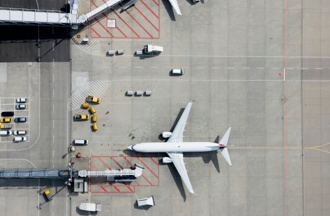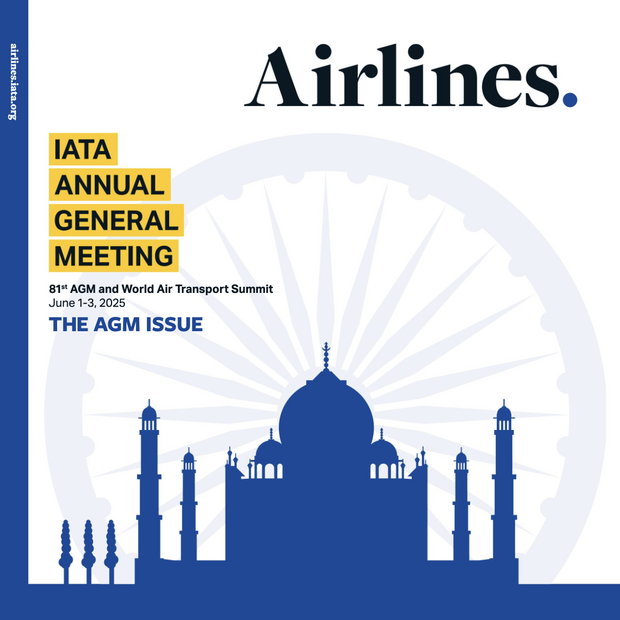
Translations:
国际航协发布2019年航空运输安全报告 (pdf)
IATA publie son rapport sur la sécurité des compagnies aériennes en 2019 (pdf)
"إياتا" يطلق تقرير سلامة شركات الطيران للعام 2019 (pdf)
IATA divulga Relatório de Segurança de 2019 das Companhias Aéreas (pdf)
Montreal - The International Air Transport Association (IATA) announced the release of the 2019 Safety Report showing continuing improvements in airline safety compared to 2018 and to the preceding five years.
All major 2019 safety performance indicators improved compared to 2018 and to the average of the 2014-2018 period as shown below:
| WHAT | 2019 | 2018 | 5-year average (2014-2018) |
|---|---|---|---|
| All accident rate (accidents per one million flights) | 1.13 or 1 accident every 884,000 flights | 1.36 or 1 accident every 733,000 flights | 1.56 or 1 accident every 640,000 flights |
| Total accidents | 53 | 62 | 63.2 |
| Fatal accidents | 8 fatal accidents (4 jet and 4 turboprop) with 240 fatalities* |
11 fatal accidents with 523 fatalities | 8.2 fatal accidents/year with an average of 303.4 fatalities each year |
| Fatality risk | 0.09 | 0.17 | 0.17 |
| Jet hull losses (per one million flights) | 0.15 which is equal to 1 major accident for every 6.6 million flights | 0.18 (one major accident for every 5.5 million flights) | 0.24 (one major accident for every 4.1 million flights) |
| Turboprop hull losses (per one million flights) | 0.69 (1 hull loss for every 1.45 million flights) | 0.70 (1 hull loss for every 1.42 million flights) | 1.40 (1 hull loss for every 714,000 flights) |
*There were also 7 fatalities on the ground in the accident involving Busy Bee Congo
“The safety and wellbeing of our passengers and crew is aviation’s highest priority. The release of the 2019 Safety Report is a reminder that even as aviation faces its deepest crisis, we are committed to making aviation even safer. Based on the 2019 fatality risk, on average, a passenger could take a flight every day for 535 years before experiencing an accident with one fatality on board. But we know that one accident is one too many. Every fatality is a tragedy and it is vital that we learn the correct lessons to make aviation even safer,” said Alexandre de Juniac, IATA’s Director General and CEO.
Jet hull loss rates by region of operator (per million departures)
Five regions showed improvement in 2019 compared to the previous five years (2014-2018) in terms of the jet hull loss rate.
| Region | 2019 | 2014-2018 |
|---|---|---|
| Global | 0.15 | 0.24 |
| Africa | 1.39 | 1.01 |
| Asia Pacific | 0.00 | 0.30 |
| Commonwealth of Independent States (CIS) | 2.21 | 1.08 |
| Europe | 0.00 | 0.13 |
| Latin America and the Caribbean | 0.00 | 0.57 |
| Middle East and North Africa | 0.00 | 0.44 |
| North America | 0.09 | 0.17 |
| North Asia | 0.15 | 0.00 |
Turboprop hull loss rates by region of operator (per million departures)
All regions except for Latin America and the Caribbean showed improvement when compared to their respective five-year rates. Accidents involving turboprop aircraft represented 41.5% of all accidents in 2019 and 50% of fatal accidents.
| region | 2019 | 2014-2018 |
|---|---|---|
| Global | 0.69 | 1.40 |
| Africa | 1.29 | 5.40 |
| Asia Pacific | 0.55 | 0.87 |
| Commonwealth of Independent States (CIS) | 15.79 | 16.85 |
| Europe | 0.00 | 0.15 |
| Latin America and the Caribbean | 1.32 | 0.26 |
| Middle East and North Africa | 0.00 | 3.51 |
| North America | 0.00 | 0.67 |
| North Asia | 0.00 | 5.99 |
IOSA
In 2019, the all accident rate for airlines on the IOSA registry was nearly two times better than that of non-IOSA airlines (0.92 vs. 1.63) and it was more than two-and-a-half times better over the 2014-18 period (1.03 vs. 2.71). All IATA member airlines are required to maintain their IOSA registration. There are currently 439 airlines on the IOSA Registry of which 139 are non-IATA Members.
Fatality Risk
Fatality risk measures the exposure of a passenger or crew to a catastrophic accident with no survivors. The calculation of fatality risk does not consider aircraft size or how many were on board. What is measured is the percentage of fatalities among those on-board. This is expressed as fatality risk per millions of flights. The 2019 fatality risk of 0.09 means that on average, a person would have to travel by air every day for 535 years before experiencing an accident with at least one fatality. On average, a person would have to travel every day for 29,586 years to experience a 100% fatal accident.
Download the 2019 Safety Report
For more information, please contact:
Corporate Communications
Tel: +41 22 770 2967
Email: corpcomms@iata.org
Notes for Editors:
- IATA (International Air Transport Association) represents some 290 airlines comprising 82% of global air traffic.
- You can follow us at www.twitter.com/iata for announcements, policy positions, and other useful industry information.
- Safety Fact Sheet
- IATA defines an accident as an event where ALL of the following criteria are satisfied:
- Person(s) have boarded the aircraft with the intention of flight (either flight crew or passengers)
- The intention of the flight is limited to normal commercial aviation activities, specifically scheduled/charter passenger or cargo service. Executive jet operations, training, maintenance/test flights are all excluded
- The aircraft is turbine powered and has a certificated Maximum Take-Off Weight (MTOW) of at least 5,700KG (12,540 lbs.)
- The aircraft has sustained major structural damage exceeding $ 1 million or 10% of the aircraft's hull reserve value, whichever is lower, or has been declared a hull loss

